Last Sunday, October 9th, together with my friend Juan and my brother Jaime, we traveled to Bucharest to take part in its marathon, with around 700 runners registered in the distance.
We picked Bucharest following our series of marathons abroad (to combine tourism with long distance running) that has taken some of us to run together in Paris, Berlin, Roma, Athens, Rotterdam, New York, Sevilla (x3), Madrid, Millau, Dublin (x2), Lisboa, Vienna, Krakow, Porto and now Bucharest.
To prepare for this marathon I followed the same 16-week training plan I had used in the past. Just before those 16 weeks of the plan, thanks to a running challenge we followed in the company, I cumulated ~240km in 4 weeks between end May and end June. Then I kicked off slow with the plan as I had some weeks in which I traveled due to family and work. In the end I arrived to Bucharest with less mileage (460km) in the legs in those 16 weeks than I would have liked. I trained quite well between August and especially September. In those 16 weeks I averaged 35km per week, completed 4 long runs (of 22km, 27km, 30km and 21km – with positive feelings especially in this last one) and a few sessions of series, though not enough of them to get a bit faster. I was confident in being able to complete the marathon in a time between 4h05′ and 4h15′ even if the final mark was uncertain.
The profile in Bucharest is rather flat. The organization prepared a circuit mainly composed of long avenues, allowing us to run at constant pace though there were up to eight sharp U-turns. The race started and finished in the Constitution square, in front of the iconic Parliament building. And we stayed the weekend at an apartment at walking distance from the place.
The temperature was mild in the morning, the sky was clear and it would be a bit hot towards the end of the race, though the temperature did not exceed 22°C. My strategy was to start at a pace just below 6min per km, and then, if I felt well, accelerate the pace at mid-race so that I could target a time below 4h15′. There were pacers for times aiming at every 15-minute mark and even though I did not follow any of them they were useful as references at every U-turn (i.e., I could see how far I was from each of the 4h00 and 4h15 pacers as I ran always in between them).
The bad news of the weekend was that my brother Jaime fell sick and by Saturday afternoon the throat ache he developed did not allow him to swallow without strong pain. He stayed in the apartment and finally took the decision not to take part in the race on Sunday, as in a marathon you need to constantly drink and eat.
The race started at 9:30am and we ran together with the participants in the half marathon and the relay race. That made the first half of the race a bit more crowded. For the first 13-14 kilometres Juan and I ran together, all the way up to the Arch of Triumph and down to the Romanian Athenaeum. Up until then we had averaged ~5’50″/km including a technical stop. Then, Juan softened his pace and stayed behind.
I kept my pace for a few kilometres including the stretch in the Cișmigiu Gardens where I found it difficult to run with the narrower paths (compared to the big avenues of the rest of the race) and the irregular ground. From the km 18 I increased the pace and averaged ~5’40″km in the next 13 kilometres until the km 30 mark. In that stretch we ran long kilometres by the Dâmbovița river, we passed the half marathon by the Parliament, we ran by the iconic Bucharest Fountains (by then we were no longer a crowd but a flow of isolated runners and some small groups)…
At the km 31 the race circuit went back to the Bulevardul Unirii, where we first turned to the East all the way to the National Arena (by the km 36) and then took a U-turn to head West back to the Parliament building. The circuit was quite straightforward in that last quarter of the race. There I felt the legs a bit stiffer, but I managed to keep a constant pace which was only slowed down at a supply post and a medical stop that made me lose some 30 seconds. I averaged 5’55″/km from the km 31 to the 41.
In all those kilometres I had seen the pacers of 4h00 not very far away and the 4h15 at increasing distances behind me. I started to make the numbers in my head and realized that I could well be somewhat below 4h05 and set that as an objective for the last kilometres, to try to run a faster marathon than my previous one in Sevilla.
The last 3 km of the race are superb. The race goes back to the Bulevardul Unirii and you have the view of the imposing Parliament building at the end of it, where you know that the Finish line is located. I kept my pace along the 40th and 41st kilometres and only gave it all at the last 1,200 metres.
In the end, I clocked a net time of 4h04’09”, a time better than what I expected and a bit faster (45″) than in Sevilla earlier this year (where I finished stronger but did a slower first half). Bucharest 2022 has been my 23rd marathon completed, easy to say today but not so on April 30th 2000 when I started in the distance in Madrid.
With those 4h04’09”, I was again above the 4-hour mark and finished in the 317th place out of 640 finishers (50% percentile). That time makes it my 9th worst marathon, though with a better time than the last three marathons and with a very positive feeling all along the race (for a second marathon in a row), thus, I am already thinking on getting again more serious with the series training to target a time under 4 hours in the next marathon, possibly next spring.

The organization of the race was great. The circuit showed a magnificient and beautiful city. They could have included some more water supply posts, but at least we could get water bottles to administer the water ingestion in between posts. I also missed some gels provided by the organization or more isotonic drinks; but with what they provided and the three gels I took I could manage the race well. The finish line was great, the wardrobe service was close to the start and finish line, there were even some puffs where to sit and rest by the finish area… It was a great experience.
Looking forward to the next race, that one with Jaime running with us again.



















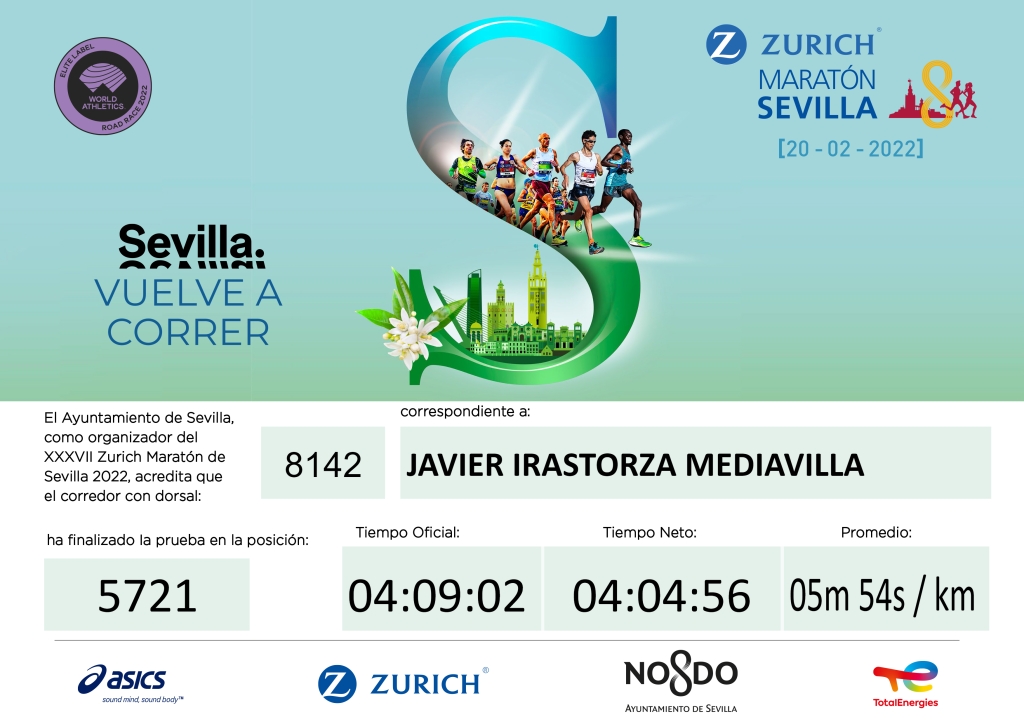










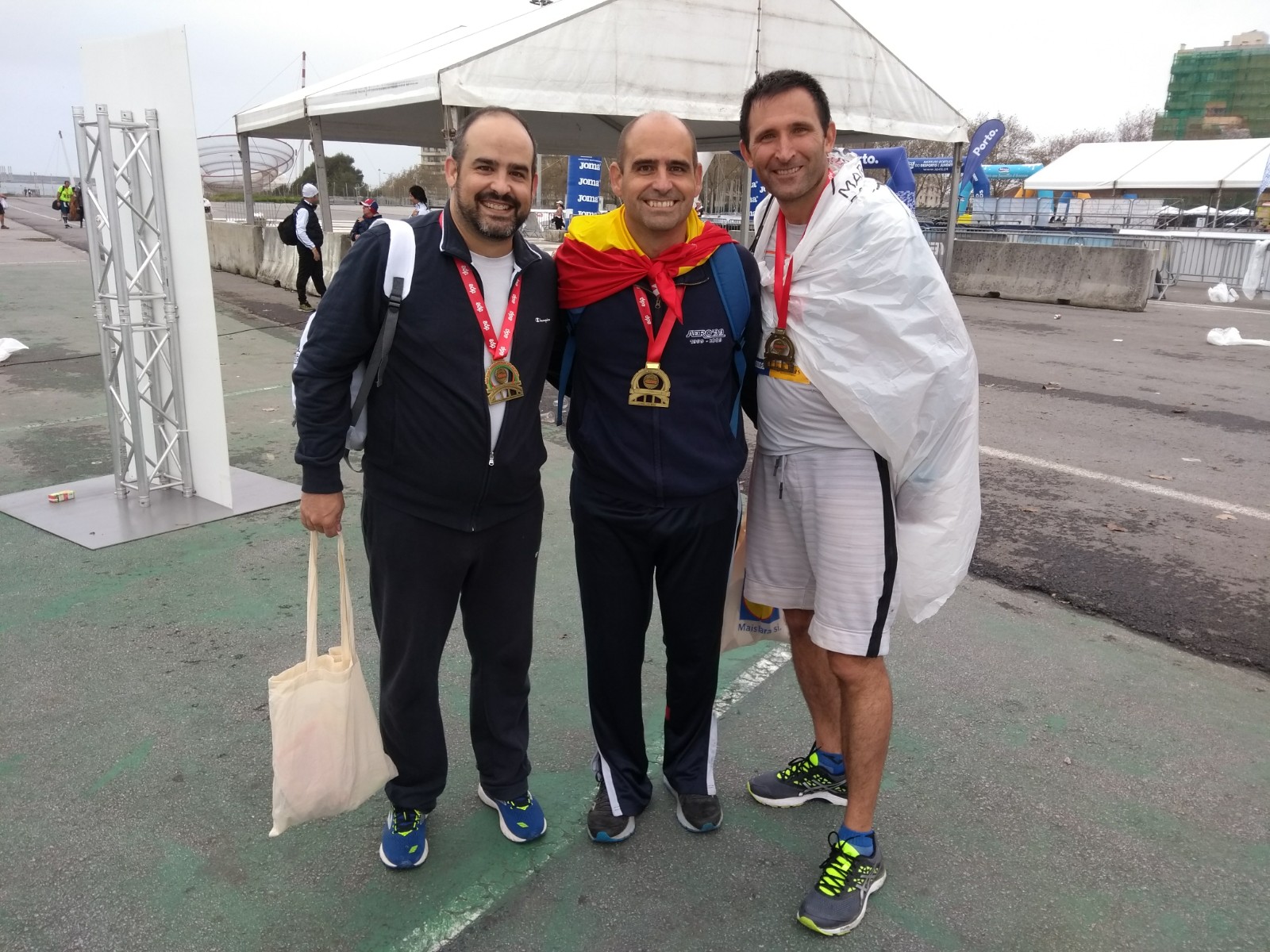









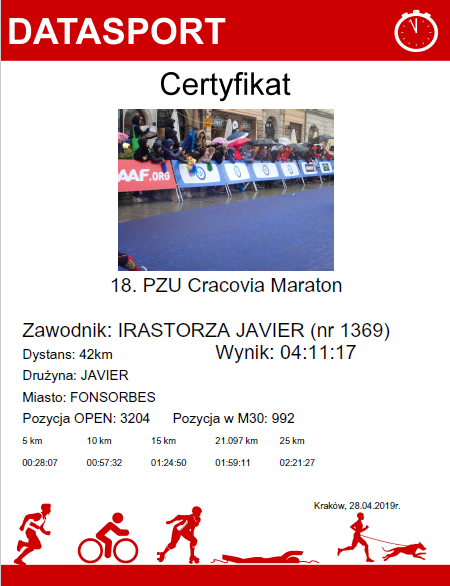















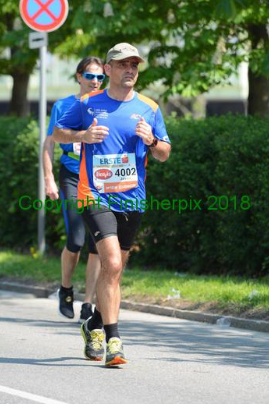




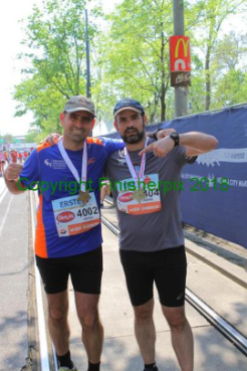

















 I then felt that it was becoming difficult to keep below 5 min per km. I opted for relaxing the pace just a few seconds for a couple of kilometres to see how the body was responding. From km 27 to 33 I was then shifting from 5 to about 5’05”-15″. Since I was not recovering the 2 minutes lost at km 15, I then considered shifting from plan A (below 3h30′) to plan B, a new PB (running below 3h34’50”).
I then felt that it was becoming difficult to keep below 5 min per km. I opted for relaxing the pace just a few seconds for a couple of kilometres to see how the body was responding. From km 27 to 33 I was then shifting from 5 to about 5’05”-15″. Since I was not recovering the 2 minutes lost at km 15, I then considered shifting from plan A (below 3h30′) to plan B, a new PB (running below 3h34’50”).












